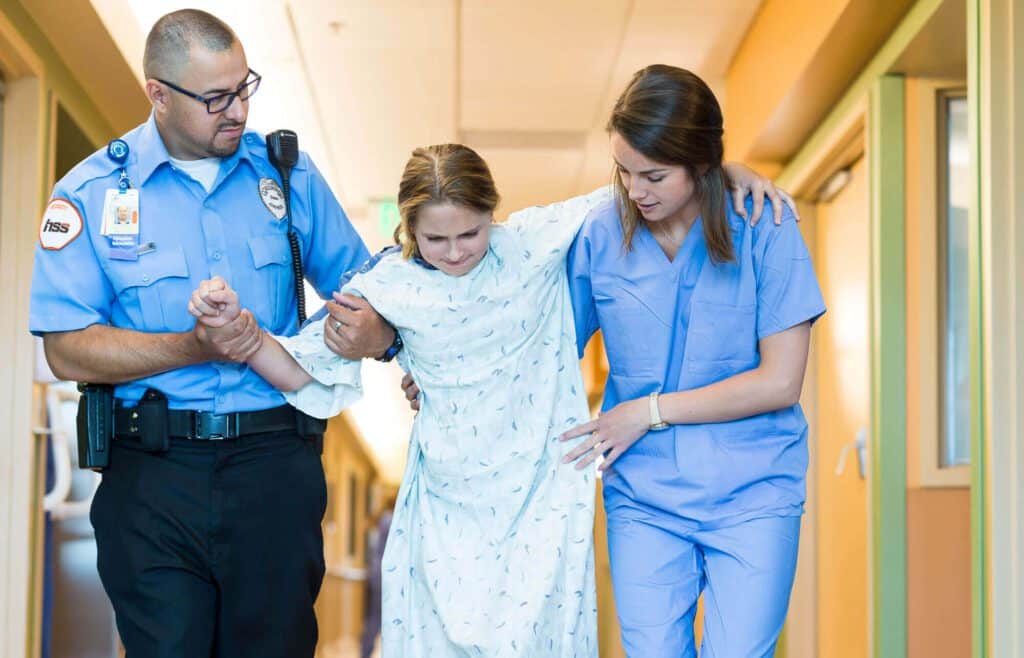As active shootings have bannered across news feeds, everyone is taking measures to be prepared and know the best protocols to handle not only active shooters but all emergencies. Schools must practice emergency drills with students, so why isn’t this the case for all companies and organizations? One of the reasons is that nobody actually expects an emergency to occur. However, when an actual emergency occurs, gaps in training and malfunctioning equipment have potentially devastating effects.
Most companies meet the requirements required by law to keep people safe by providing signage, fire extinguishers, and even some employee safety training. More medical companies are beginning to incorporate private security in their budgets as these real-life nightmares are happening more frequently. These strides by healthcare companies are setting the stage for other industries to practice live drills, especially when it comes to active shooters. The real-life simulation program is in its infancy stages, accepting only volunteer participants, but is fully coordinated with law enforcement and other emergency services.
Medical Facilities Prepare for Live Emergencies
Large medical centers are working with security and first responders to practice live emergency drills in hopes of being more prepared and saving lives if an emergency does occur. Educating and preparing participants on response tactics at hospitals and clinical facilities is the focus, and the drills are carefully designed to feel as realistic as possible. Learning to move patients to safety and lockdown in the safest spaces within a facility can be vital in a real emergency. Participants expressed gratitude for the new experience as valuable tactics were learned, including what in a patient room can be moved to block a door, what rooms are safe areas, what to avoid, and how to stay safe.
Finding Unused Space Similar to the Facility
The medical centers where the drill has been most successful have unused space in their building where the scenario closely resembles what is onsite. Soundproofing and ensuring the patients, visitors, and anyone else in the area will not be disturbed, combined with widespread knowledge of when and what is happening, is essential to the success of these drills.
Communication Starts Early and Often
Because of the realistic nature of the drills, communication should start early and often. Announcements, signs, and other means of contact should be used to ensure people know the drill is just a drill. Having private security guards outside, inside, and around the facility during these drills is wise. Highly trained security guards attentively monitor traffic in and out of the building and provide answers to any questions, establishing and maintaining order. Security can address any concerns immediately. The most exceptional security guards are trained in law enforcement and the military with continued training from a reputable security placement firm. Communication should be open about the drill, start early, and continue throughout the process.
Realistic Drills Prepare for Real-Life Emergencies
Participants perform simulated tasks that replicate their assigned duties. They learn to follow instructions to save lives amidst noise and confusion, which are inevitable in an actual emergency. The drills are currently voluntary for participants, with an emphasis on active shooter training. The exercise is designed to be as close to the real thing as possible, involving harsh language and tones, high chaos levels, and realistic weapons that discharge believable loud sounds.
Although the focus is currently on live active shooter drills, this approach to emergency training opens the door for the practice of all emergency drills as they pertain to the facility. The most highly trained emergency crews have extensive training, but simulating real-life experience is next-level preparation.
Simulations Take Effort and Coordination
Live emergency training is no small feat for these facilities, with extensive preparation and execution of the drills. The amount of coordination is significant, and some medical centers have hired private security teams to come and help prepare for the drills. Using professionals in safety and security enhances the experience for participants.
Healthcare companies are leading others with their commitment to protecting patients, visitors, and associates. Whether preparing for a hurricane, pandemic, multi-car accident, or other emergencies, these live drills allow participants to experience a close-to-real experience. The sounds, energy, and effort evident in this model will serve others in the future.
The positive response to participation in live drills has been overwhelmingly positive. Providing these opportunities will provide a safer and more secure work environment. The videos of the live-action emergencies are reviewed with participants after training, and trained professionals address the responses. Many participants claim it was very different to be in a simulation, and some found themselves frozen and forgetting what they could do. Participants feel better prepared and safer after completing training.
If your organization is looking to enhance safety and security, consider hiring private security guards with professional experience and practicing live drills that can simulate real-life emergencies. Contact a well-established security placement firm for affordable safety solutions.
Source: https://www.offdutyofficers.com/medical-centers-team-with-security-experts-for-live-emergency-drills/







